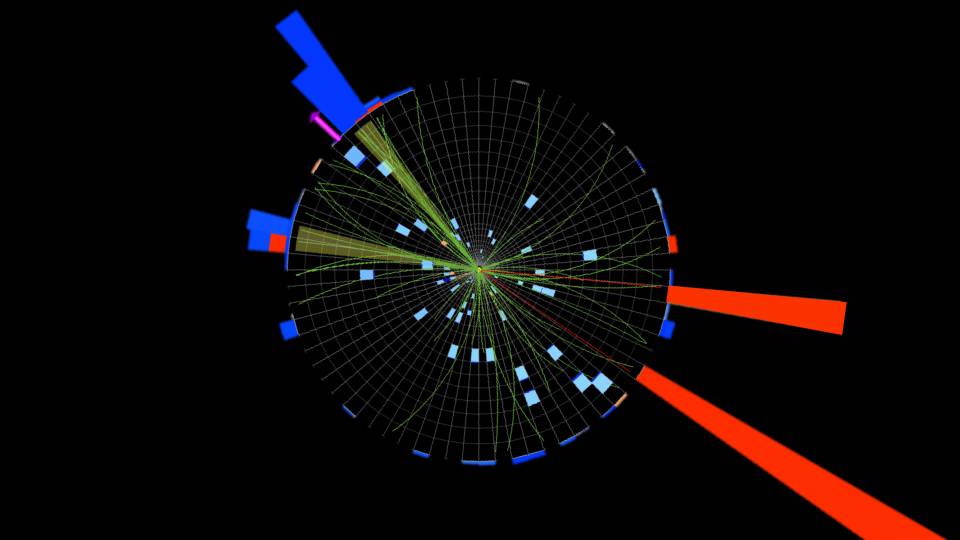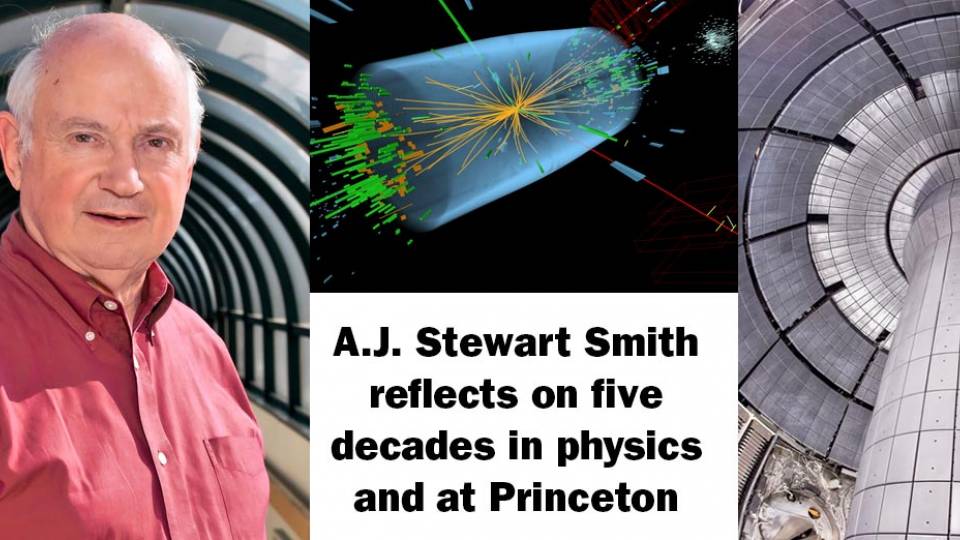Princeton University researchers have been significantly involved in the 50-year endeavor to observe the Higgs boson, a particle theorized to be crucial to understanding the nature of the world around us. On Oct. 8, the 2013 Nobel Prize in Physics was awarded to Peter Higgs and François Englert, two physicists who, in separate 1964 papers, proposed the basis of the particle's existence, the Higgs mechanism.
On a larger scale, the prize is a nod from the world to the thousands of scientists who spent 50 years searching for the particle, said Princeton Professor of Physics Christopher Tully, who worked on the Higgs project for more than 20 years.
"It recognizes that what we discovered has a profound impact on the way we understand how the universe works. It's a great feeling to have been a big part of that," Tully said. "It recognizes the great insight that these two fellows had so long ago, and that such a simple and beautiful model was compelling for 50 years. Thousands of physicists pursued it, and we were able to meet this tremendous scientific challenge using all the know-how and technology we could muster."
Princeton scientists conducted work that influenced the development of the Higgs mechanism, which proposed that the all-encompassing Higgs field is what gives elementary particles mass. After the 1964 publications, Princeton researchers were among the many scientists worldwide who undertook the search for the long-elusive particle — which has no spin, no charges and decays almost immediately. On July 4, 2012, the European Organization for Nuclear Research (CERN), which had led the search for the Higgs boson, announced that physicists had observed a new particle whose properties are consistent with the predicted particle. That the particle was the Higgs was further confirmed in March.
Princeton contributed to the long hunt for the Higgs in many ways, and the University's strengths were in software and detector development, data analysis and luminosity systems that monitored the rate of particle collisions, said Pierre Piroué, the Henry DeWolf Smyth Professor of Physics, Emeritus, and a senior physicist. Piroué first conducted research at CERN as a Princeton professor in 1960, six years after the organization was founded. In the early 1990s, he and his students began working on CERN's Large Hadron Collider (LHC), the world's largest and highest-energy particle accelerator that was largely built to prove or disprove the existence of the Higgs particle. "The contribution of Princeton at the LHC and CERN was quite substantial," Piroué said.
Professor of Physics James Olsen said that the University's connection to the Higgs boson goes back to a 1962 publication the journal Physical Review by Nobel Laureate Philip Anderson, the Joseph Henry Professor of Physics, Emeritus, and a senior physicist. In that paper, Anderson, a condensed-matter physicist, proposed a mechanism that could result in massless particles acquiring mass, a process similar to the mechanism later developed by Higgs, Englert and others. Anderson won the 1977 Nobel Prize in Physics for his work on superconductivity.
"It had pieces of the final Higgs theory, but was not the complete theory," Olsen said. "The work of Anderson partly inspired Higgs, who cited Anderson directly in his famous paper."
Olsen, one of the many Princeton physicists and students who contributed to the Higgs search, said that the Nobel Prize is a public acknowledgment of the work's ongoing value and merit. He has worked with the LHC since 2007 and is the 2013-14 co-leader of the Higgs analysis group of the Compact Muon Solenoid (CMS) experiment, which was largely geared toward identifying the Higgs boson. Olsen and his students led the search for the Higgs as it decayed into bottom quarks, and will continue to look for and analyze new particles produced by the LHC.
"What the Nobel Prize does is keep this project in the public view," Olsen said. "It's one of the biggest results in physics in a long time. It really goes to the fundamental fabric of the universe. The Higgs field permeates the universe and laid the groundwork for the planets, galaxies, stars and us."
Olsen echoed the sentiment of Higgs, who, in a statement from the University of Edinburgh where he is a professor, emeritus, said he hopes the Nobel will boost the perceived value of "blue-sky research." Olsen points out that Higgs and his colleagues proposed the Higgs mechanism well before the particles it pertained to had been generated or studied.
"They were trying to solve a problem that didn't really exist since those particles hadn't been discovered yet," Olsen said. "There's a 50-year arc, and now the research done by theorists doodling away 50 years ago on something with no connection to 'real life' has come full circle."
Scientists who devoted long years to the Higgs search can share in the Nobel win even without officially receiving the prize, Tully said. Tully has conducted research at CERN since he was 19, and began work on the LHC in 1993 as a graduate student under Piroué. He helped design from scratch one of the detectors that uncovered the Higgs boson, and was a member of the team hunting for the Higgs boson. The CMS detector takes snapshots of the LHC collisions at a rate of 40 million per second. Tully was responsible for capturing images of events that produce two photons, images that were analyzed for evidence of the Higgs particle before it decayed into the photons.
Tully and his group have another 10 years of data to be collected by the LHC. They are working to improve the LHC particle detectors so that characteristics of the Higgs can be analyzed more closely, he said.
"We continue to look at the particle and continue to learn from it," Tully said. "The discovery didn't end there — we can learn a lot more."
The discovery of the Higgs boson also included Daniel Marlow, the Evans Crawford 1911 Professor of Physics, and professional specialist Valerie Halyo. Marlow worked at the LHC to measure luminosity, which, among other things, is used to determine the number of Higgs events expected at the point where the particle beams intersect. Halyo was responsible for building the CMS luminosity system that monitors the collision rate produced by the LHC and subsequently calibrates the physics measurements. She also led the search for the Higgs boson's decay into neutral, long-lived particles in the leptonic channel, which includes elementary particles such as electrons and muons.


